Business in Tajikistan, Dushanbe. Tajik Economy
Privatization in Tajikistan. Tajik Foreign Trade, Logistics. Mining. Silk Road
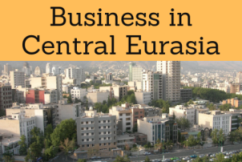
Tajikistan is one of the World's poorest countries.
Tajikistan is part of the Silk Road, the Asian Trade route
Tajik Natural resources: precious metals (gold, silver), zinc, uranium, iron, manganese, and ore (400 mines)
Huge hydro resources potential
Tajikistan has the largest Asian coal reserves
- Introduction to the Republic of Tajikistan (Central Asia)
- Tajik Economy
- Privatization Process in Tajikistan
- Doing Business in Dushanbe
- Foreign Trade of Tajikistan
- Transport and Logistics
- Business Opportunities in Tajikistan:
- Energy
- Mining Industry
- Chemical industry
- Civil construction
- Construction materials manufacturing
- Light and food industry
- Agriculture and agricultural processing products
- Tourism
- Investment in Tajikistan
- Case Study: Tajik Aluminum Company
- Access to the Tajik market
- Business Plan for Tajikistan


The purposes of the subject “Foreign Trade, Logistics and Business in Tajikistan” are:
- To analyze the Tajik Economy, Logistics and Foreign Trade
- To conduct research on business opportunities in Tajikistan
- To explore the Tajik trade relations with the student's country
- To learn about Tajik Trade Agreements
- To examine the profile of Tajik companies
- To develop a business plan for the Tajik market

The Subject “Foreign Trade, Logistics and Business in Tajikistan” is included within the curriculum of the following academic programs at EENI Global Business School:
Masters: International Business, Foreign Trade.


Masters adapted to  Tajik Students.
Tajik Students.
Languages:  (or
(or  Tajikistán
Tajikistán  Tadjikistan).
Tadjikistan).
- Subject Credits “Doing Business in Tajikistan”: 1

International Trade, Logistics and Business in Tajikistan.

- Almaty-Bishkek Logistics Corridor
- Kyrgyzstan-Iran Logistics Corridor
- North-South Corridor (India-Russia)
- Silk Road
- Europe-Caucasus-Asia Logistics Corridor
- China-Central-West Asia Logistics Corridor
- Trans-Caspian Logistics Corridor
- Access to the:
- China-Pakistan Economic Corridor
- Islamabad-Istanbul Corridor
- India-Chabahar (Iran)-Afghanistan Economic Corridor
- International Transport and Transit Corridor under the Ashgabat Agreement (not a member)
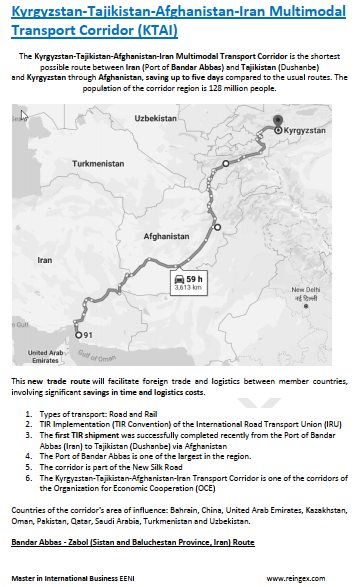

Tajik Preferential Access and Trade Agreements:
- Tajikistan and the Central Eurasian Economic Area
- Commonwealth of Independent States
- Economic Cooperation Organization (ECO)
- Shanghai Cooperation Organization
- Armenia-Tajikistan Agreement
- Trade Agreement with the Eurasian Economic Union
- Ukraine-Tajikistan Agreement
- Islamic Trade Preferential System
- Central Asia Cooperation (CAREC)
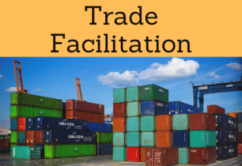
- World Trade Organization (WTO)
- Agreement on Sanitary and Phytosanitary Measures
- Agreement on Trade in Services (GATS)
- Agreement on Technical Barriers to Trade
- Agreement on Preshipment Inspection
- Agreement on Safeguards
- Trade Facilitation Agreement
- World Customs Organization (WCO)
- Kyoto Convention
- BIC
- Chicago Convention (ICAO)
- International Maritime Organization (IMO)
- Convention for Safe Containers
- Istanbul Convention
- Customs Convention on Containers - not a member
- Convention Harmonization of Frontier Controls of Goods
- International Road Transport Union (IRU)
- TIR Convention
- Guidelines on Safe Load Securing for Road Transport
- Organization for Cooperation between Railways (OSJD)

- Organization of Islamic Cooperation (OIC)
- Islamic Development Bank
- Tajikistan - Middle East (AMED)
Euro-Asian Organizations:
- Economic Commission for Asia (ESCAP)
- Asian Development Bank
- Asia Cooperation Dialogue
- Boao Forum for Asia
- European Investment Bank
- Economic Commission for Europe (UNECE)
- Africa-Asia Strategic NAASP

- United Nations
- International Trade Centre
- World Intellectual Property Organization (WIPO)
- UNCTAD - Not-member
- World Bank
- World Trade Organization (WTO)
- International Monetary Fund
- World Customs Organization (WCO)
- Tajikistan shares borders with Uzbekistan, Kyrgyzstan, and Afghanistan
- Tajik Capital: Dushanbe
- The largest cities of Tajikistan are Khujand, Kulyab, Kurgan-Tube, and Khorog
- Official language of Tajikistan: Tajik (Persian language) and Russian
- Tajik Population: 7 million people
- Tajik people represent 80% of the population
- Independence of Tajikistan: 1991 (URSS)
- Tajikistan is a Landlocked country
- Area of Tajikistan: 141,800 km².
- Tajikistan is the smallest country in Central Asia
- Mountains cover 93% of the territory of Tajikistan
The main religion of Tajikistan is Sunni Islam .
Tajikistan belongs to the Central Eurasian Economic Area (Islamic Civilization).
Tajik Economy.
- Strong economic reforms in Tajikistan
- Legal guarantees for investors and investment protection
- Free economic zones
- Tajik Currency: Somoni
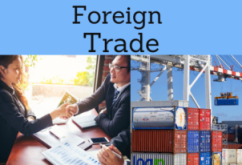
International Trade of Tajikistan.
- Main Tajik exports: aluminum (50% of total exports), hydro-power, cotton, fruits, vegetable oil, and textile
- Largest export markets of Tajikistan: the Netherlands, Turkey, Iran, and Uzbekistan
- Main imports of Tajikistan: electricity, petroleum products, aluminum dioxide, cars, machinery, and food commodities
- Top Tajik import partners: Russia, China, Kazakhstan, Uzbekistan, Iran, and Turkey
- Main sectors receiving FDI: energy, civil construction, banking services, and communication sector
- The largest investors in Tajikistan are Russia, Kazakhstan, Cyprus, China, Canada, the United States, and the UK
- Access to the Eurasian Land Transport Initiative
(c) EENI Global Business School (1995-2025)
Top of this page






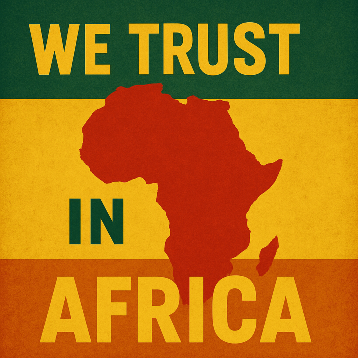


 WhatsApp
WhatsApp